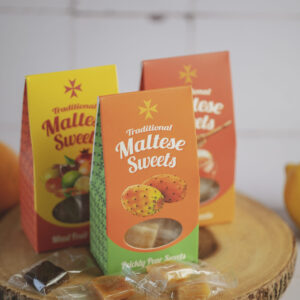
Gozo cheeselet, also known as Ġbejna, is a traditional Maltese cheese made primarily from goats or sheeps milk. It originates from our beloved island of Gozo but is widely used around the Maltese islands.

Photo: Instagram @_hello.natalie
Ġbejniet comes primarily in 3 different forms; Fresh (Ġbejna Friska), Dried (Ġbejna Moxxi), Peppered (Ġbejna Tal-Bżar).
All you need to make gbejniet is milk, rennet, a large pot, thermometer, cheese baskets, salt, and a draining container would be handy too. The milk along with the rennet is poured into a non-reactive pot and is heated and stirred until it reaches around 38° Celsius. The mixture is left to set at room temperature for around 3 hours. After they are set the curd is put into the cheese baskets and is left to drain overnight. The next morning the cheese is flipped and put back into the basket to let drain overnight again. If they are to be sold as Fresh (Ġbejna Friska) they are to be sold the following morning and consumed within a few days. The texture of Fresh Ġbejniet is often soft and creamy and is widely used in salads, pie and qassatat, soaps, or simply enjoyed on its own.
If the gbejniet are to be sold as Dried (Ġbejna Moxxi), they are refrigerated for a few days, taken out

Photo: Amanda Gauci
and left to dry. When sold this way, they are known as gbejniet bojod or moxxi (white and salted cheeselets). The texture if hard and crumbly and are often grated over pasta, used in cooking, or eaten as a matured cheese. Those who enjoy a bit of spiciness with their food can opt for Peppered (Ġbejna Tal-Bżar) which, once dried, are left to soak in vinegar for a few weeks before being rolled in pepper and packed. The texture is often dried or semi-dried with a spicy and tangy flavour is often used on salads, cheese platters, and on Maltese bread.
Gozo cheese is not just a food item but a part of Maltese cultural heritage. It reflects the island’s agricultural traditions and is a common feature in local markets and festivals. Visitors to Gozo often seek out this cheese for its authentic taste and connection to the island’s culinary traditions. Gbejniet don’t get better than on the island of Gozo with recipes for making these popular cheeselets passed down from generation to generation since time immemorial.
 It-Tokk, Independence Square, Victoria, Gozo | Ta’ Dbiegi Crafts Village, Gharb, Gozo
It-Tokk, Independence Square, Victoria, Gozo | Ta’ Dbiegi Crafts Village, Gharb, Gozo



0 comments
Write a comment